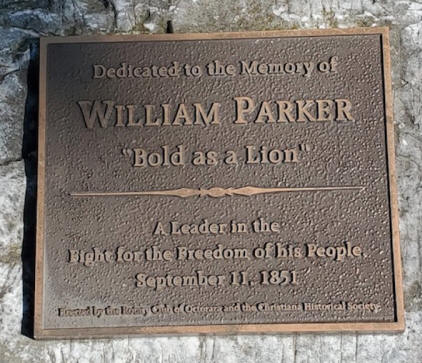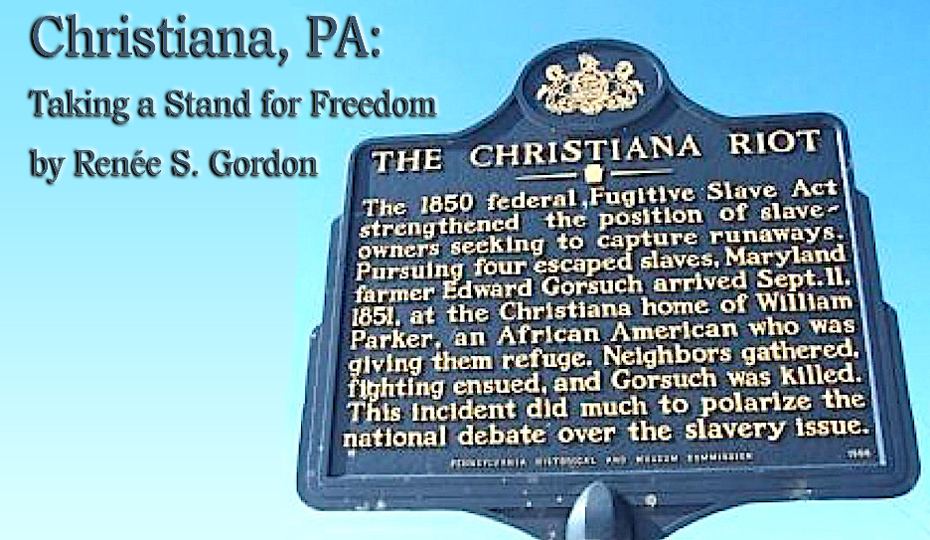
10-15-2020
An excellent way to gauge the political climate is to
examine the laws that are deemed necessary
and enacted and the response of the population. In the
inexorable march to the Civil War the most impactful law
was the 1850 Fugitive Slave Act, strengthening the lax
enforcement of the 1793 Fugitive Slave Act. The 1850
law, enacted as part of the 1850 Compromise, was created
to facilitate the recapture of those identified
as southern slaves. Southerners felt that Northern
sentiment was not in their favor and abolitionism was on
the rise.

The law added a number of federal commissioners with the
power to issue warrants permitting the removal to the
South of escapees. Commissioners were paid $10 per
authorization for removal. They received only $5.00 if
the arrestee was later found not to have been a
slave. Legal and physical hindrance of recapture was
punishable by 6-month’s incarceration and a $1,000
fine. Escapees could not testify in
their own defense. Northerners objected to the use of
federal officials and dollars to enforce Southern rights
but in 1859 the Supreme Court ruled the law
constitutional in Ableman v. Booth. Resistance began
almost immediately and Pennsylvania became one of its
first battlegrounds and a flashpoint for the North and
the South.
John Brown’s October 16, 1859 raid on Harper’s Ferry
tends to be the incidence of armed resistance to slavery
with which people are most familiar but eight years
prior, on September 11, 1851, a significant resistance
took place. The Christiana Riot/ Resistance took place
in a farming village outside Lancaster,
PA, approximately 20-miles from the Maryland
border. Numerous white abolitionists and African
Americans, both fugitive and free, were settlers in the
area. #visitpa
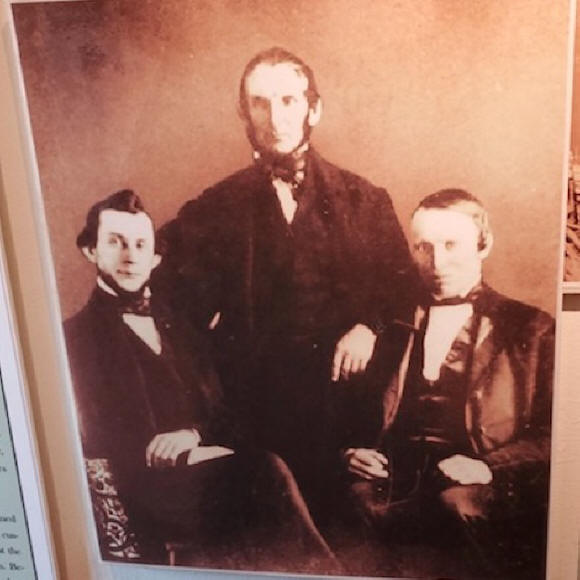
On November 7, 1849 four slaves, Noah Buley, Nelson
Ford, George Hammond, and Joshua Hammond escaped
from Edward Gorsuch’s Retreat Farm in
Baltimore County. Gorsuch felt stunned and
betrayed because he considered himself a “benevolent”
owner. The 1850 Act provided incentive for Gorsuch to
recover his “property” and on August 28, 1851 he was
told that three of his slaves were in Lancaster County
along with nearly 3,000 other blacks and active
Underground Railroad stations.
Warrants were obtained on September 9th in Philadelphia
where the plan was overheard by a black UGRR operative.
William Still was informed and sent Samuel Williams,
another black operative, to Christiana to warn the men.
On September 11, 1851 eight men, including U.S. Deputy
Marshal Henry Kline, Gorsuch and his
son Dickinson, entered the village to make arrests.

Two of the freedom seekers were protected on a farm
owned by an African American, William Parker, who fled
Maryland slavery in 1839. He headed a group created to
protect the community from slave catchers. The posse
took the train to Parker’s house, arriving around 4 am
at the two-story stone-fenced house. They demanded the
men and Gorsuch quoted the Bible, Parker, countered with
Bible verses. The family residents retreated to the
second floor as the Gorsuch party entered. One of his
men fired and Eliza, Parker’s wife, blew a tin fish horn
to signal for assistance. Gunfire was exchanged before
the posse retreated to the yard.
Armed African American assistance began to arrive in
numbers varying from 15 to 150. Tensions grew and two
white men, Quakers Castner Hanway and Elijah
Lewis arrived. They examined the warrant but refused to
assist. At this point the accounts differ but we know
Dickinson fired on Parker and was critically
wounded with more than 60 bullets. Gorsuch again
attempted to retrieve his property and was beaten and
ultimately killed. The remaining posse members fled.
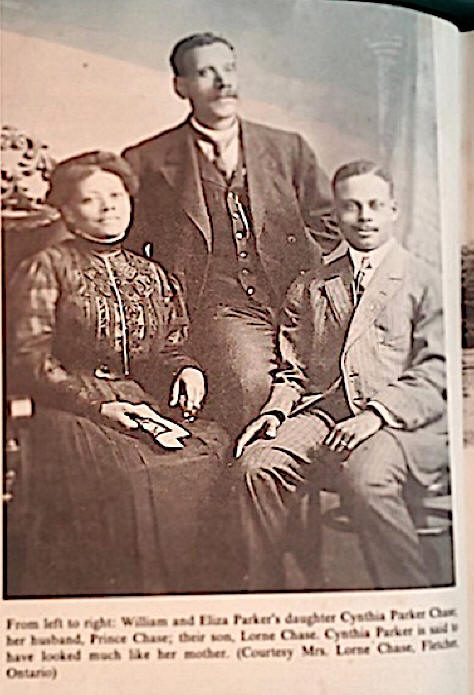
The three fugitives fled to Canada. Parker, Pinckney,
and Johnson fled via Rochester, NY, where they stayed
with Frederick Douglass, and then to Buxton, Canada.
Eliza and her sister were arrested, eventually freed,
and reunited with their husbands in Canada.
chris_moyamensing
A cadre of 45 marines was sent from Philadelphia on
September 13th to hunt down the rioters and arrests were
made. Lancaster County indicted 38 men on 117 counts of
treason and imprisoned them in Moyamensing Prison in
Philadelphia. Castner Hanway was identified as the
leader and tried first. His federal trial began on
November 24, 1851 and lasted 18 days in the Old
Pennsylvania State House, Independence
Hall.
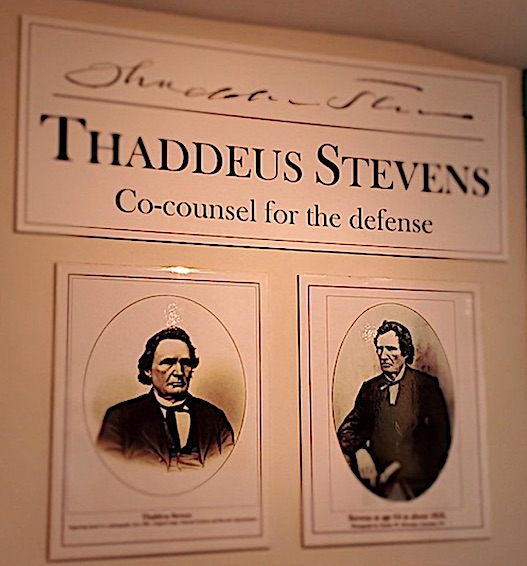 


The Maryland Attorney General led the nationally famous
trial prosecution team and PA Congressman Thaddeus
Stevens led the defense team. Abolitionists helped
finance the trial and Lucretia Mott attended daily,
supplied clothing and sat beside the
defendants. Hanway was judged not guilty and charges
against the other men were dismissed.
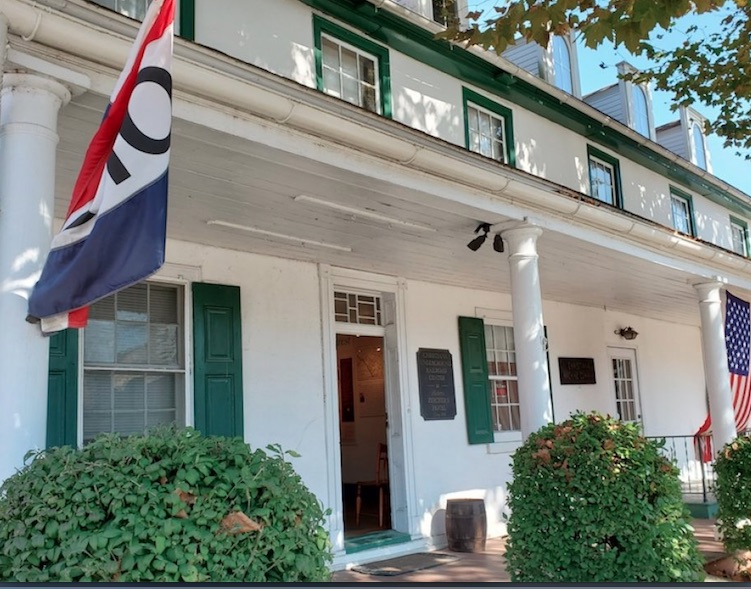
 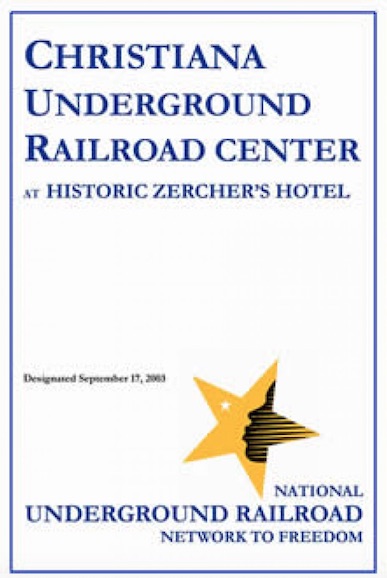
Historic Zercher’s Hotel is the site of the Christiana
Underground Railroad Center. The museum offers guided
and self-guided tours that relate a holistic story of
the Christiana Resistance. The story is presented
chronologically and in an easy to follow format.
Documents, photographs, maps, artifacts and
informational plaques greatly enhance visitor’s
understanding of the event. zerchershotel.com
Immediately outside the hotel is a 4-sided monument
commemorating the resistance. One side lists the names
of the arrested men and a southern facing side is
dedicated to Gorsuch.
chris_map
A detailed map of UGRR locations in Lancaster and
Chester Counties is available in the center. Christiana
is part of PA’s Quest for Freedom Trail. paquestforfreedom.com
Spanning nearby Pine Creek is the 1830 Stone Arch
Railroad Bridge. Trains ran across this bridge, some
with private cars that were used to hide escapees in
hidden compartments.
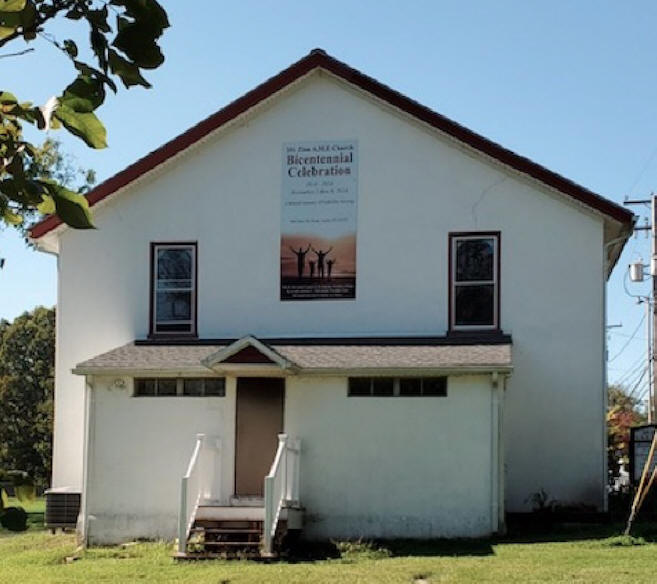
Mount Zion AME Church on Newport-Zion hill Road was the
core of the African American community. It was
established in 1822 and became a mecca for
runaways. During the search after the riot the militia
fired through the front door believing fugitives were
inside. The original door is displayed inside the
church.

Descendants of the participants remain in the area. You
may be lucky enough to take a tour led by Darlene Colon.
To take the journey with her is to live the experience.
The riot was a microcosm of the coming Civil War with
both factions willing to bear arms over the legality and
morality of slavery. It hardened the resolve of the two
sides and convinced each of the righteousness of their
cause.

Gorsuch’s youngest son Thomas was incensed by the murder
of his father and the verdict. He wrote to a close
friend who was even more outraged. The friend later
stated that the Christiana incident shaped his
pro-slavery feelings and allowed him to see that a
complete separation from the North
was just, necessary, and inevitable. That friend was
John Wilkes Booth.
Renee Gordon has written a weekly travel column for
the Philadelphia Sun Newspaper for the past fifteen
years and has published articles on local, national and
international travel in numerous publications. Her
columns focus on cultural, historic and heritage tourism
and her areas of specialization are sites and
attractions related to African American and African
Diaspora history. Renee has been a guest radio
commentator on various aspects of tourism and appeared
in a documentary, "The Red Summer of 1919". As an
educator for thirty years she was an English teacher,
event and meeting planner, served as an educational
consultant and intern-teacher mentor. She contributed to
textbooks on women's history and classroom management
and has facilitated workshops on both subjects. Renee
considers herself a "missionary journalist" and as such
she continues to promote heritage and sustainable
tourism.
2013 Recipient of African Diaspora World Tourism
Flame Keeper in Media Award for Travel Writing
Affiliations
IABTW- International Association of Black Travel Writers
PBJ - Progressive Black Journalists
We'd love your comments!
|
Connect with us on:
American Roads and
Global Highways has so many great articles you
may want to search it for your favorite places
or new exciting destinations.

|















